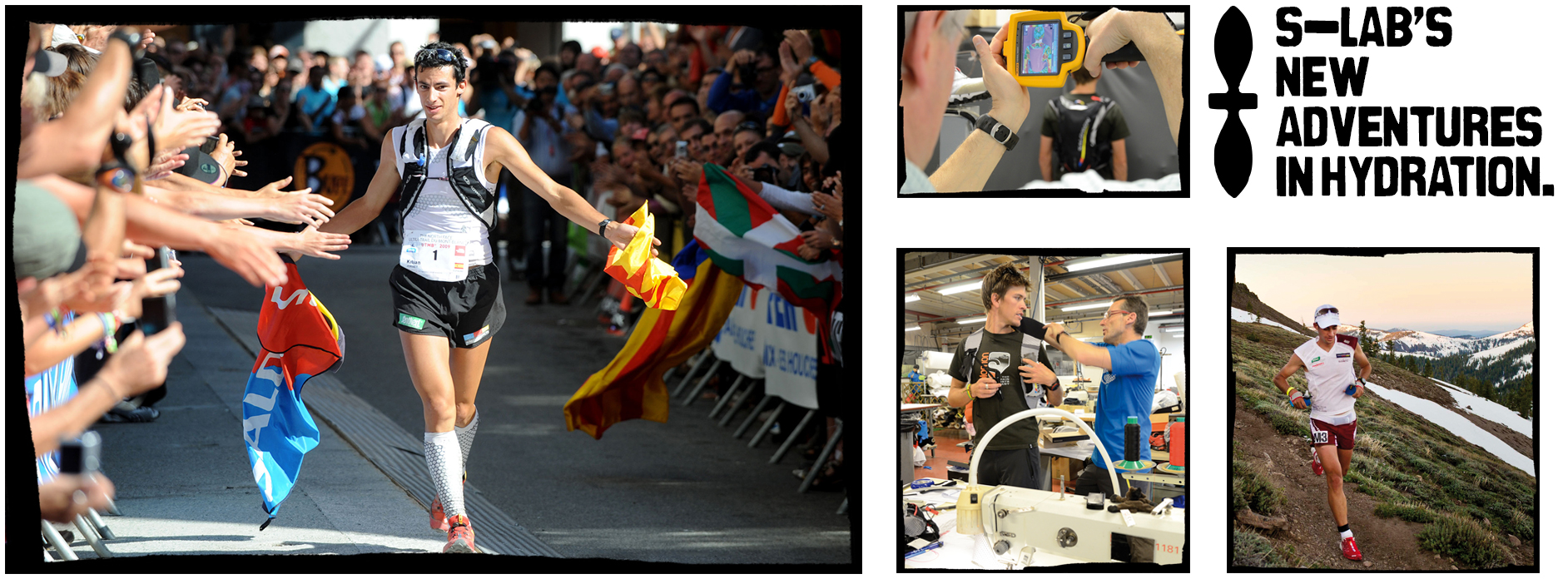The whispers started around about when Kilian Jornet showed up in Chamonix for the 2009 UTMB wearing what looked like, for all intents and purposes, a waistcoat- albeit an extremely technical looking one. Hindsight tells us that what he was in fact wearing was an early prototype of a hydration pack that would prove to be a game-changer in the world of trail running- it was, to give it it’s full title, the Salomon S-Lab Advanced Skin 5 Hydration Pack. It quickly became clear that there was some really exciting race-refuelling projects going on behind the secretive doors of the S-Lab.
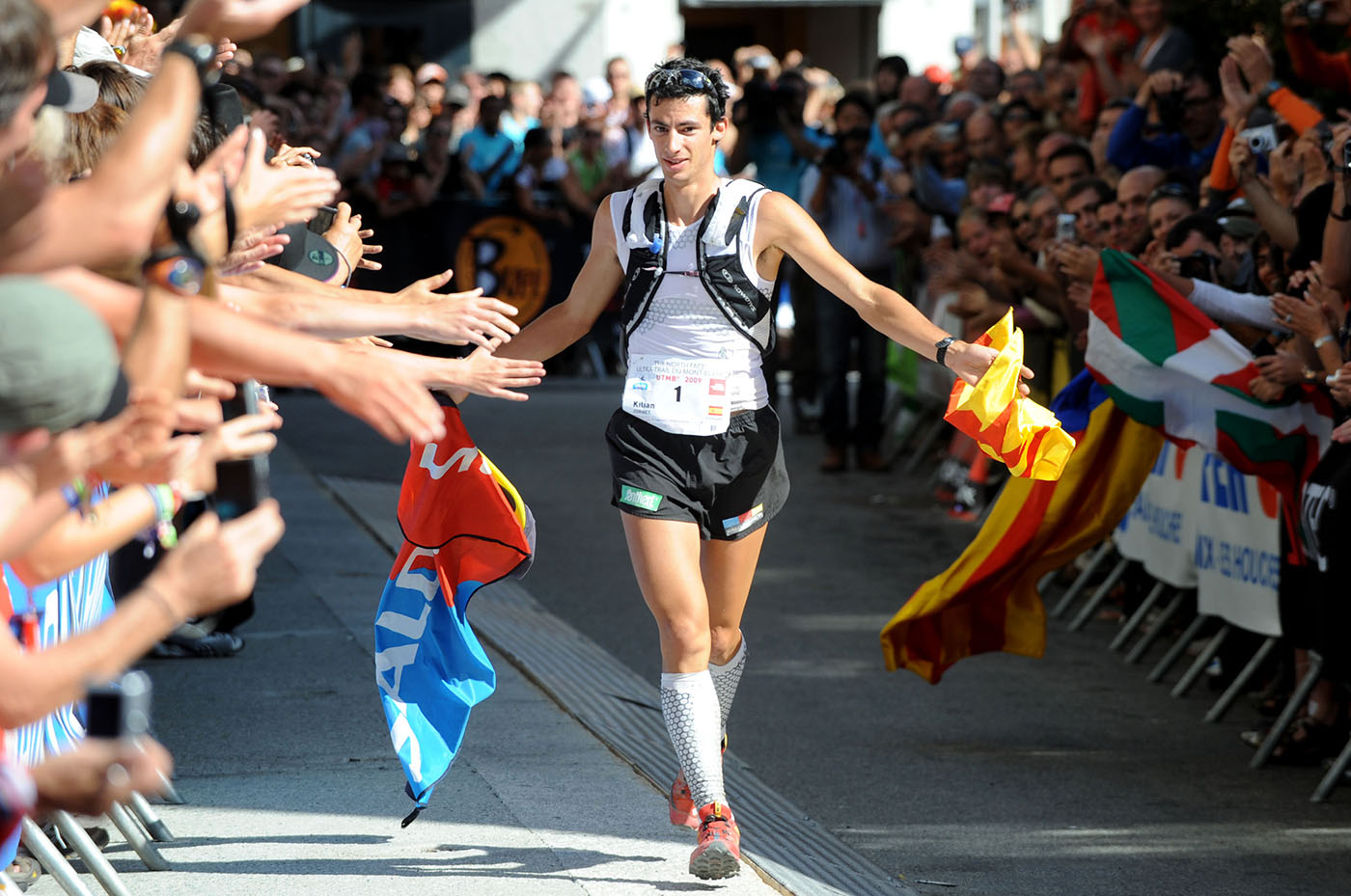 Kilian at the UTMB® finish line with the prototype Advance Skin Pack © J-P Clatot
Kilian at the UTMB® finish line with the prototype Advance Skin Pack © J-P Clatot
So what is the ‘S-Lab’? Well, the S-Lab houses Salomon’s exclusive crack-team of designers & innovators- those entrusted with collaborating closely, through every single step of the design process, with the international team athletes to develop custom-fit, state-of-the-art footwear and equipment- firstly for the team itself and then ultimately for products branded and sold as part of the premium, race-ready, S-Lab range. A now iconic range who’s products are consistently voted as the best in their class in reviews and testing. The athletes that make up the international team are well known- Kilian Jornet, Anna Frost, Ryan Sandes & Emelie Forsberg, to name but a select few, but what about the other half of this unique creative-cycle? Who are the fabled lab’s designers and developers?
 Ryan Sandes giving some S-Lab input. © Pascal Lebeau
Ryan Sandes giving some S-Lab input. © Pascal Lebeau
Serge Chapuis sits a room filled with a mind-boggling array of machinery- contraptions that track human movement, others that scan physiological, mechanical and psychological mechanisms, yet more for the study of human motion including motion tracking, electrophysiology of muscle and brain activity & various methods for monitoring physiological function. Then there are the countless shelves straining under the substantial weight of numerous rolls of futuristic fabrics. Serge Chapuis is in the S-Lab- his place of work. He talks passionately about the process that occurs between athlete and designer. “An athlete knows perfectly their own body and the potential of their equipment. It’s their knowledge of the environment during races that plays a huge role in defining the equipment we develop.” Says Chapuis. Serge’s role as project manager R&D for S-Lab puts him at the sharp-end of the most advanced technologies available but, despite this, perhaps the greatest tool available to him are the team athletes themselves. “They are absolutely perfect for testing the products and they give us the most precise details to allow us to enhance them.” He says, before continuing “Take Kilian for example, he pushes us to the limits of the knowledge of human sciences and technologies.” It was that pushing which turned out to be the catalyst that led to the quantum leap in design for the Advanced Skin 5 Hydration Pack.
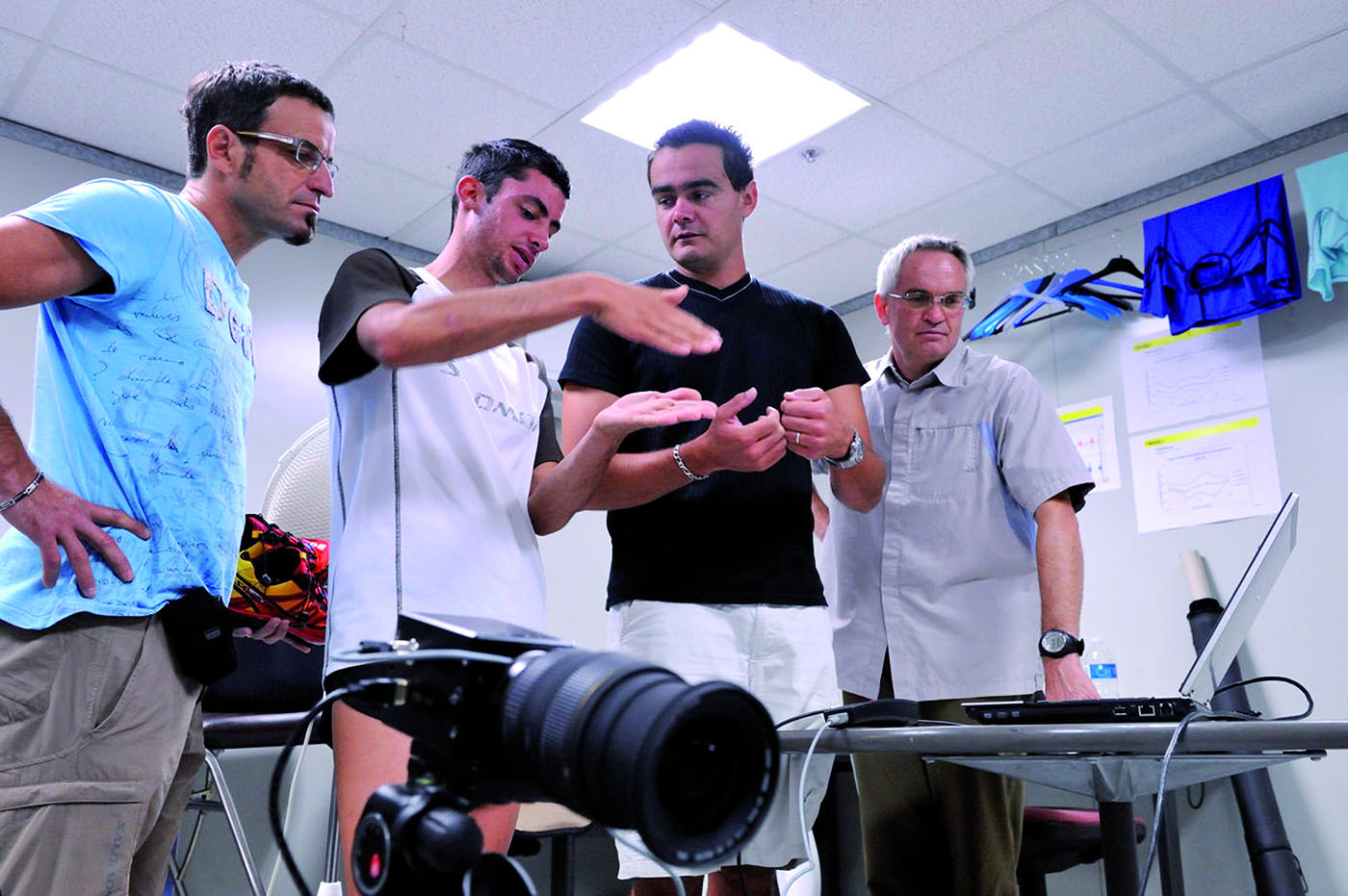 Kilian Jornet, like all the athletes, plays a huge role in the deveolpment of new S-Lab products. © Pascal Lebeau
Kilian Jornet, like all the athletes, plays a huge role in the deveolpment of new S-Lab products. © Pascal Lebeau
By 2009 the whole area of hydration within mountain running, and especially mountain racing, was ripe for a rethink- of course there were multiple choices out there but as the races got increasingly faster and the performance levels went skyward, the need for a hydration pack that could keep up with the sports progress, that really worked in harmony with the athlete and that essentially became part of the athlete was demanded. The solution- the aforementioned pack- was that product. The era of carrying a hydration pack was, in the eyes of the S-lab/Athlete collaboration, well and truly over. The era of wearing a hydration pack, as Kilian’s dominant UTMB display that year confirmed, had begun. Having rewritten the rules on how a pack fitted, the team didn’t rest on their laurels- they then turned their creative focus on how it functioned.
The sport of mountain running is evolving at a phenomenal rate- todays elite runners are redefining what many believed to be impossible only a few short years ago- 100 mile courses are now raced in the true sense of the word and podium places can often depend on as little as a few minutes lost over 15 hours or more. “Seconds count.” Is how Chapuis puts it. Seconds that could, for example, be lost removing and refilling a traditional back fitted hydration bladder. This has led Serge and his team on a quest to find alternatives. “Nowadays races can be won or lost at the food stations.” He says. “Our athletes need to be as fast and efficient as possible. This is what has driven us to find solutions for faster passages through the aid stations, firstly by replacing the water bladder, which takes a long time to open and refill.” So is this really the end of the back mounted water bladder/reservoir? Serge thinks so. “For the top racers yes.” He replies. So are handhelds the alternative? The answer to that is yes…and no.
At the 2010 Western States 100 in California that man Kilian Jornet was once again out front, this time battling with Anton Krupicka for the win. Problems with hydration ultimately cost Kilian that day and he was beaten by both Krupicka and a late-surging Geoff Roes who took out the win. Kilian returned to the S-Lab team intent on developing specific products that would help him return to the race in 2011 and take home the victory. Twelve months later, true to his word, he done just that. On his feet were a prototype lightweight mountain-racing flat that would go on to be released as the wildly popular ‘Sense’ shoe and in his hands, or to be more specific, on his hands he wore a type of glove/soft-bottle combination unlike anything seen before. The S-Lab were about to change the hydration landscape once again and the missing link in hydration was about to be filled.
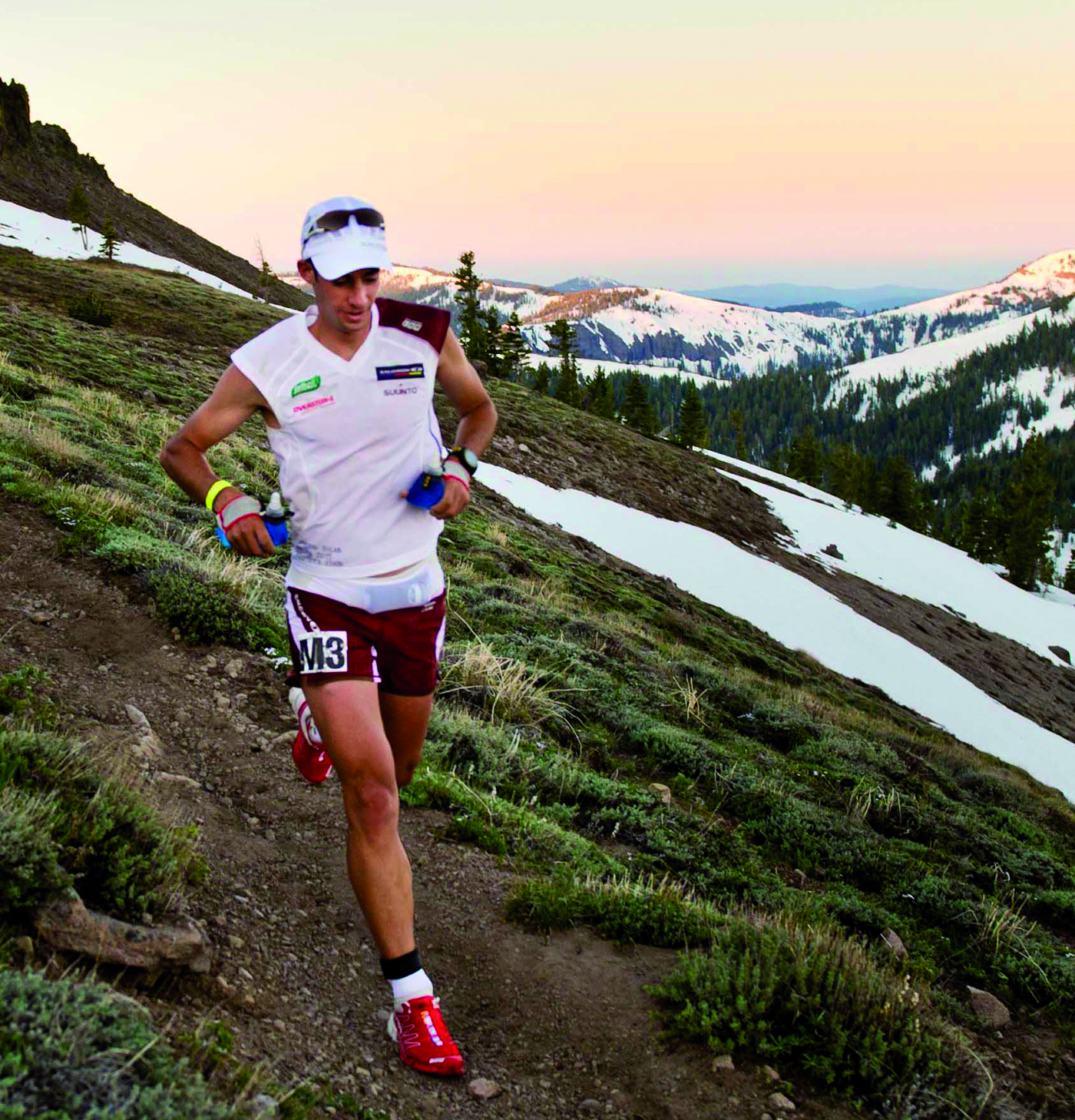 Kilian rocking some prototype Hydro Set gloves and soft-flasks. © 2011 Kevin Arnold
Kilian rocking some prototype Hydro Set gloves and soft-flasks. © 2011 Kevin Arnold
Not so long ago there were only really two options for carrying water during races- the bladder in a backpack or bottles- either handheld or carried on a belt. A lot of racers prefer handheld bottles for the very reason Serge mentioned earlier- the ease and speed with which they can be refilled. The problems with bottles, however, are that they are big and bulky. What the lab developers and Salomon athletes came up with was pretty much an offspring of a handheld bottle and a bladder- a new category which they christened the ‘soft-flask’- a bottle made from the soft material found in bladders with a one way bite-valve at the top- an incredibly simple solution in hindsight but one which will bring a continuity and modularity to the S-Lab hydration range. A range that now consists of three products.
- Sense Hydro S-Lab Set- the S-Lab product that was released after further development to Kilian’s Western States Glove. A pair of ultra lightweight, ergonomically fitting soft-flask holders.
- Advanced Skin S-Lab Belt the latest addition to the range, a retake on the classic hydration belt that also utilises the soft-flask design for a low-profile, front & back storage belt.
- Advanced Skin S-Lab Pack- 5 or 12 Litre Where it all began- but wait, you say, this still uses a back bladder. Well, that is all about to change..
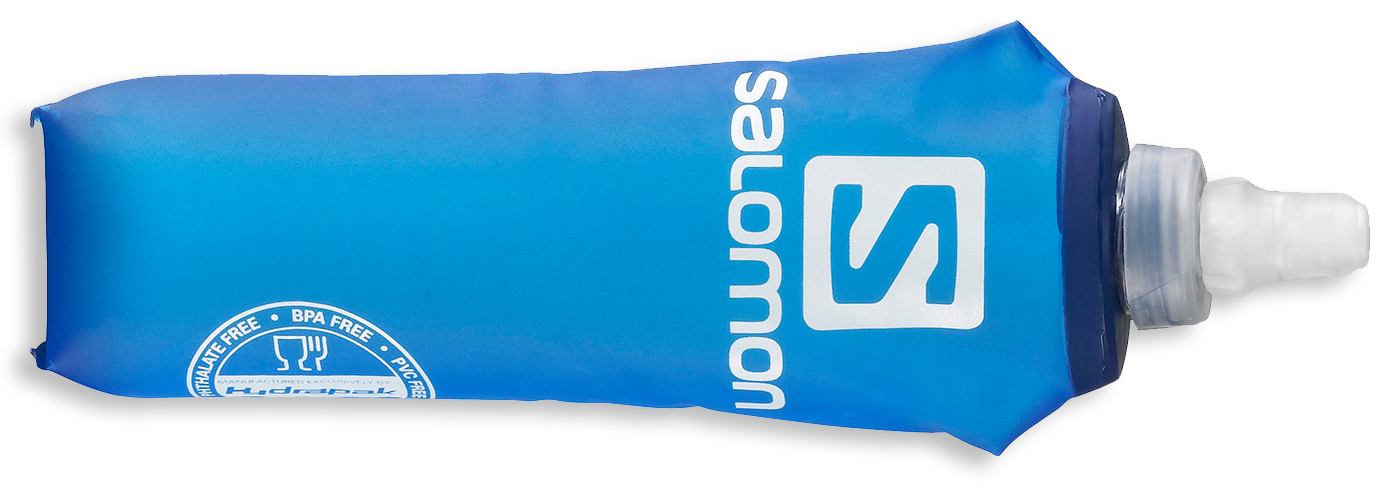 The soft-flask. An integral part of the S-Lab hydration range © Salomon
The soft-flask. An integral part of the S-Lab hydration range © Salomon
The back bladder is history- at least as far as the top racers are concerned, is what Serge implied earlier. And as confirmation of this statement, next seasons Skin Hydro Packs, as they are being renamed, will be released with 2 x 500ml front mounted soft-flasks as standard in both the 5 and 12 litre versions- part of an all-new, radical, redesign. The soft flasks refill-friendly design and shrink-as-you-drink functionality will now be the product that links all three products offering a mix & match system for all hydration needs from urban trail to ultra trail. The inspiration for the packs redesign came to Serge from an unlikely source. “I like to watch ‘Formula One’ on the TV and I specially enjoy the pit stops when the teams change the tyres. My idea was to use a similar technique during the resupplying at race aid-stations to save time. The soft flasks mounted on the front was perfect for this.” He says. Wait, so the inspiration for new Skin Packs come from car racing? “Yes, I make a reference to F1 because races are lost if tyre changes are too slow, seconds can cost you the race.” He says with a grin.
Perhaps now we know at least one of the secrets to the Salomon International Teams speed and dominance.

Thanks for reading, if want to share the article click and copy the link below//Robbie, RunTramp.

